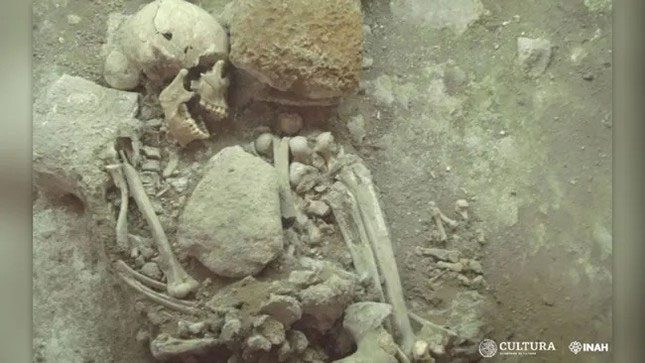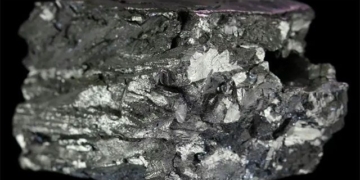A new analysis of the skeletal remains buried beneath Hernán Cortés’ palace in Mexico reveals that it does not belong to a monk, as was long believed, but is actually that of a middle-aged indigenous woman.
The skeleton found in the tomb at the entrance of the Hernán Cortés palace – the Spanish conqueror responsible for the fall of the Aztec Empire – was not the remains of a Spanish monk as previously thought, but belonged to a middle-aged indigenous woman.

The burial site of the indigenous woman, initially believed to be the remains of a monk, was found beneath the Cortés Palace in Mexico. (Photo: INAH).
In 2017, a powerful 7.1 magnitude earthquake shook the states of Puebla and Morelos in Mexico, as well as Mexico City, causing buildings to collapse and injuring thousands. During the search efforts, researchers cataloged all items in the museum, including an open tomb displayed at the entrance of the palace.
The tomb was first excavated in 1971 and left in situ, eventually being fenced off with a label indicating that the remains might belong to Spanish monk Juan Leyva.
Despite these clues, other aspects of the burial did not match what would be expected for a Spanish monk, including the fetal position of the burial.
In a statement on January 18, the National Institute of Anthropology and History of Mexico (INAH) announced a new analysis of the burial, revealing that the remains previously thought to be those of a Spanish monk were, in fact, those of an indigenous woman.
INAH anthropologists Pablo Neptalí Monterroso Rivas and Isabel Bertha Garza Gómez conducted a thorough examination of the remaining bones in the tomb and detailed their findings in a report.
Both the skull and pelvis indicated that the individual was female, approximately 30 to 40 years old at the time of death, Monterroso Rivas and Garza Gómez noted in their report. They did not observe any clear signs of cervical vertebrae being “deformed” as researchers noted in 1971, but they did see some flattened areas on the back of the woman’s head, possibly due to cranial shaping practices.
Why was she buried in the Cortés Palace?
Starting around 1150, many centuries before Cortés arrived in central Mexico, the area was occupied by the Tlahuica people, an Aztec ethnic group, who built a wealthy city called Cuauhnáhuac (present-day Cuernavaca), known for its numerous buildings and dense population. After destroying the city in 1521, the Spanish burned the “tlatocayancalli” – the Aztec tax collection agency – and constructed a palace for Cortés on the ruins.
Based on archaeological evidence of various layers built over time, anthropologists suggest that the Tlahuica woman was buried very close to the time Cuauhnáhuac fell to the Spanish invasion, between 1500 and 1521.
In an email to Live Science, Monterroso Rivas proposed that, rather than a traditional cemetery burial, it might be more appropriate to consider a series of ritual events, possibly sacrifices, with the Tlahuica woman being the last to occur.


















































